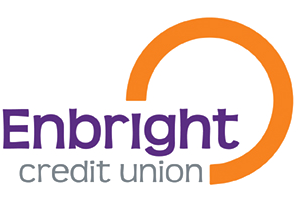The more you can save, the easier your home buying process is. Certain loans require a down payment that is equivalent to 20% of the purchase price. For instance, if you’re buying a home that’s $300,000, you’ll need $60,000 in the bank for your down payment. There are mortgage loan programs that require less of a down payment, some as little as 3%. Even with a small down payment, buying a home means you need to save money. In addition to a down payment, you may need funds for the following:
- Closing costs
- Moving expenses
- Utility adjustments
- HOA Fees
- Home improvement projects
- Taxes
- Insurance
- Cash reserves*
* Cash reserves are money in a savings account after you close on the home. Specific loan applications may require you to have these reserves on hand. The bottom line is to start saving when the desire to buy your first home comes into mind.
2. Determine How Much House You Can Afford
A good rule of thumb is that your mortgage should be no more than 28% of your pre-tax income. Take your income, and multiply it by 28, and divide that by 100. To make your goal of buying a home a reality, create a budget and stick to it.
How to Get Out of Debt
3. Check Your Credit.
Your credit score will determine what type of loan you qualify for, the rate, and other options. You may receive a lower interest rate and more cost-saving options with a high credit score. Credit scores can differ amongst the three major credit reporting agencies (Experian, Trans Union, and Equifax). Additionally, a VantageScore and FICO (Fair Isaac Corporation) score may differ from the three agencies. Generally speaking, a FICO score is the preferred score for most lenders.
Here are the ranges for FICO scores:
| Exceptional |
800 – 850 |
| Very Good |
740 – 799 |
| Good |
670 – 739 |
| Fair |
580 – 669 |
| Very Poor |
300 – 579 |
*(“What Is a FICO Score and Why Is It Important?” MyFICO, 21 Oct. 2021, https://www.myfico.com/credit-education/what-is-a-fico-score.)
If you have a high credit score now, take steps to protect it. Follow these tips:
- Continue to pay bills on time.
- Don’t apply for more credit.
- Avoid new loans for cars or other items.
- Keep credit card balances less than 30% of your credit limit.
- Protect yourself against identity theft.
If your credit score is low, there are ways to move it up.
- Pay bills on time.
- Pay off or pay down revolving credit balances.
- Check for inaccuracies on your credit history; they should be reported.
Buying a first home does not happen overnight, and this is good news! This gives you time to save more. If your credit score is low, there’s time to move that needle into the green.
How to Pay Off Debts
Not all home loans are the same. Some are specially designed for new homeowners that offer special rates, low or no money down, and other considerations. Government-guaranteed loans such as FHA and VA offer favorable terms and conditions to home buyers and may be helpful to those with a lower credit score.
As a first-time homebuyer, you’ll need a highly qualified mortgage loan expert to help you navigate through a sea of loan options. Therefore, finding the right financial institution is extremely important.
Credit Union Matcher
5. Get Preapproval for a Mortgage
There is a difference between prequalification and pre-approval. Not knowing the difference could mean losing out on your dream home, especially in a hot housing market.
Prequalification for a Loan
- Mortgage lender collects basic financial information. It can be done verbally, with no verification of information.
- Gives new buyers an idea of how much house they can afford.
- There is no pulling of the credit report.
- Can be done quickly.
Prequalification is only an estimate of a loan amount. There is no guarantee that you’ll receive funding. A prequalification can be handy when you’re at the very early stages of home buying. It will give a realistic idea of the loan amount and calculate how much you need to save.
Pre-approval for a Loan
- Pre-approval can be done before a home has been chosen.
- A lender will inform you if you’ve been approved for a specific loan amount.
- It takes more time to complete a pre-approval.
- Must verify income and submit personal financial documents.
- Hard pull on a credit report is required, and a deeper dive into financial standing.
A pre-approval is a deep examination of your financial health history and gives lenders a good idea if you qualify. After a pre-approval, you’ll receive possible interest rates, loan amount, and monthly payments. Real estate agents love when clients are pre-approved. They know you’re serious about buying a home and are financially able to do so.
6. Find a Real Estate Agent
Home buying is a complicated process. A top realtor will help you navigate the home buying process and could save you money. Family and friends are good sources for recommendations. A good rule of thumb is to interview at least three realtors and be sure to ask for references. It’s important to find one that will serve your interests best and you feel comfortable working with.
7. Start the Search for Your Home
As soon as you commit to buying a home, start looking online and in-person for homes. Attend as many open houses as possible. Open houses can be done in person or virtually. If you go on a virtual open house and like what you see, you must explore the area more.
- Drive through the neighborhood
- Go at different times of the day
- Uses your senses when looking. Notice unusual smells, loud noises, etc.
- Check out the neighbor’s house and those surrounding the home.
If you’re out of state or can’t visit the area directly, you’ll need to do extensive online research to gauge the neighborhood and outlying area.
8. Make an Offer
You’ve finally found your dream home, and you’re ready to make an offer. An offer letter will usually be in writing and include the following:
- Name
- Introduction
- Current address
- Price of offer
Your agent can help you create an offer letter or write it themselves. Some letters will include an earnest deposit which may be 1 – 2% of the purchase price or whatever is common in your area. An earnest deposit may be lost if you cancel the offer. The agent will submit the letter, and the waiting game ensues. Sellers typically respond by accepting, rejecting, or countering. Negotiations will continue until both parties are happy or the agreement falls through. If the seller accepts, it is time to move on to the home inspection and appraisal.
9. Home Inspection
A home inspection is always a good idea. Most lenders do not require an inspection, but it could reveal some unsavory issues that you’re unwilling to accept or want to have the homeowner address before selling. A few examples of what a home inspector may check for include:
- Electrical issues
- Roofing repairs
- Lead paint
- Foundation cracks
- Poorly installed windows
- Drainage issues
- Hidden mold
- Bug or pest infestations
Home inspections are crucial and protect the buyer from buying a home with expensive problems. Buying a home ‘as-is’ or without an inspection will leave the buyer to repair any issues.
10. Home Appraisal
An appraisal is different than an inspection. A home appraisal is concerned with the value of the home. The inspection is about the condition of a home. Home appraisals will require a walkthrough of the house. The lender picks the licensed appraiser and will look at:
- Condition of the home
- Upgrades, remodels, or additions
- Size of lot
- Comparable homes in the area
After the appraisal, a final report is created and includes a fair market value.
11. Ask for Repairs or Credits if Needed
Homebuyers can ask for repairs or credits after an appraisal comes back. Repairs are related to safety issues like plumbing, electrical, mold, or leaking roofs. The home buyer will review all appraisals and inspection reports with the real estate agent. If you’re in a sellers’ market, it may be best to overlook minor issues like chipped paint or inexpensive repairs.
12. Final Walkthrough
After the appraisal and inspection are completed, and everything looks good, you’ll go through a final walkthrough. A final walkthrough involves making sure every last detail has been taken care of. A few things to look for include:
- Requested repairs are completed
- Appliances are in working order
- Any furniture left is in good condition
13. Close on Your First Home
Closing on a home is the final step before the house is 100% legally yours. At the closing, you’ll be signing a lot more documents. Bring your ID and a check for closing costs. After signing the documents, the title company will register a new deed in your name(s). Now it’s time to celebrate. Today is the day you are a proud, legal owner of your dream home. Congratulations are in order!
Welcome Home
Buying a home is not easy and can be one of the most challenging purchases you’ll experience. After moving in and getting settled, don’t be caught off guard by the cost of homeownership. Start a home savings account for those unexpected (and expected) home expenses.
And, don’t forget to keep your finances looking as good as your home. As a not-for-profit, cooperatively-run organization, credit unions can help with all your financial needs. Find one in your area and see why new homeowners make credit unions their trusted financial partner.


